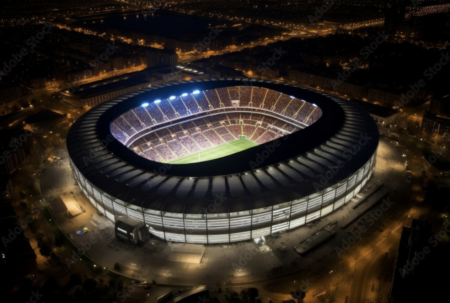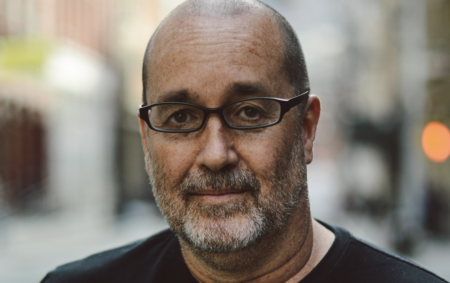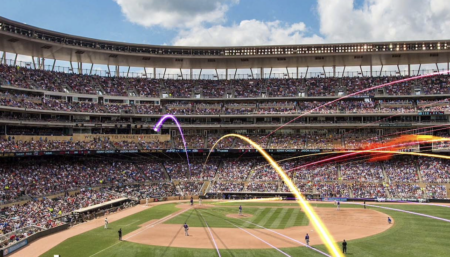The next issue of Stadia will feature an in-depth feature on the new Mercedes-Benz Stadium in Atlanta, Georgia, USA. In the first of a series of interviews with companies working on the project, Stadia speaks to David P Capezzuto, director of business development for Birdair, about his company’s role in the spectacular project.
What were the particular challenges of the Mercedes-Benz Stadium roof project?
All projects seem to have challenges that are unique to the job. Mercedes-Benz was no exception. Mercedes had a very large façade system that allowed for limited access. Many trades were needing the same real estate at the same time. We ended up using Rope Access Technicians for much of the work. Much of our work was also performed at night as to not affect other trades.
Birdair was responsible for the design, engineering, fabrication and installation of the project. Can you talk us through some of the challenges that each stage faced?
During the design stages the wind tunnel study indicated several façade areas with very high stresses in the film. Extrusions and cable re-enforcement adjustments had to be made.
Fabricating a four-layer system is always a challenge. It requires many different welding techniques and testing of the welds to assure proper adhesion. Our quality control group had to work overtime on this project and much effort went in to developing mock-ups before and final product was produced.
Access and an aggressive schedule for the installation was the challenge. NFL opening dates don’t move, so you constantly need to adapt to the real-life conditions of building a stadium. You need to adapt to the situation. Much planning and re-planning went into this project to overcome challenges that arose.
Can you explain a little about why some of the material/technology choices were made? For example, why were four-layer ETFE roof pillows selected for the petals, and single ETFE skin for the facade?
The façade was meant to act as large windows. Therefore, selecting a film that provided a balance of energy efficiency and clarity was important while still meeting the specified loading criteria. Many film samples were reviewed before the architect and owner made the final selection.
The ETFE roof pillows required four layers in order to meet the solar and strength requirements of the roof. It was also decided to incorporate the Mercedes logo into the design which added another level of complexity to the patterning and fabrication. It really looks fabulous.
What properties of ETFE made it so suitable for this stadium? Was it the only material option that would have made the project feasible?
ETFE has is becoming increasingly popular in the North America market. The clear nature of the product is a characteristic that architects have been looking for. This was the perfect product for the application.
Which aspect of the project are you most proud of?
The roof design will blow everyone away. I predict it will be one of the most talked-about roofs in the world. This ‘out-of-the-box’ thinking by the design team is what makes my job so exciting. It was great to be a part of the solution.
Birdair has worked (and is working) on some of the world’s most iconic sports venues. Can you point to any recent or ongoing projects that you’re especially excited about?
Birdair is part of the Taiyo Kogyo Corporation. We operate as part of the MakMax brand which represents Taiyo’s global dedication to membrane architecture. Mercedes-Benz Stadium is the latest in a long list of architectural innovations around the world. MakMax has several stadium projects currently being executed. Each of these projects presented its own design challenges, providing an opportunity for the build team to collaborate and rely upon MakMax’s 95 years of experience as well as its reputation built on iconic, award-winning design.
Khalifa International Stadium in Doha, Qatar, is a shining example of membrane innovation. In the first-ever instance, the company’s PTFE, ETFE and Tensotherm membrane systems were used together on the stadium to reflect harmful UV rays from the scorching desert sun while allowing natural lighting to filter in, all while providing unmatched durability.
In Spain, Wanda Metropolitano (Estadio La Peineta) is currently undergoing renovations and will soon become the new stadium of soccer club Atlético Madrid. PTFE-coated glass is being installed to modernize the stadium and exponentially increase sustainability. Rising to 57m (187ft) above the field, the roof will be visible from afar – especially at night – as it was designed with illumination in mind.
In Western Australia, Perth Stadium’s ‘floating roof’ was the first of its kind. This arrangement gives the appearance of the roof floating above the façade and seating bowl. When artificially lit at nighttime, the light-reflective qualities of the roof material provide a halo-like appearance. The roof will provide coverage to 85% of the stadium’s seats upon completion.
Bringing a futuristic flair to the stadium, Zaozhuang Stadium in east China is one of the most complex cable-supported membrane structures in the world. MakMax has installed PTFE-coated glass to provide sustainable lighting solutions and unique views for spectators.
These distinctly complex projects highlight the expertise required to make them both successful and memorable. Every stadium project has its challenges but MakMax continues to defy the limits of membranes and assist in making the architects’ imaginations a reality.
September 6, 2017




